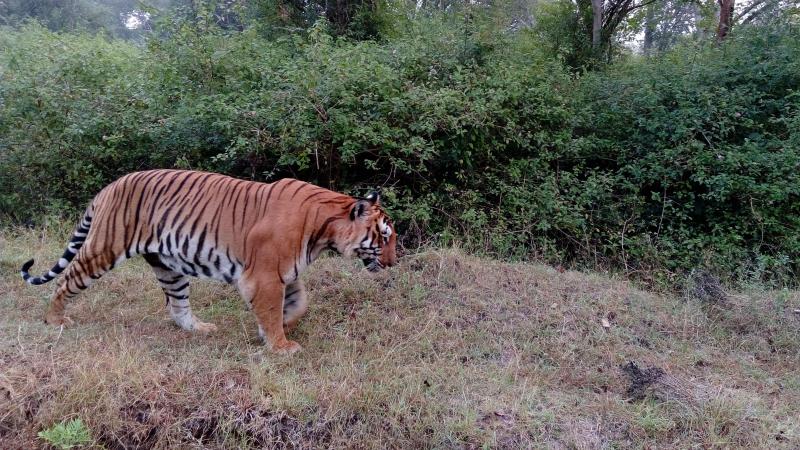
Scientists from the Kalakad-Mundanthurai Tiger Reserve (KMTR) in Tamil Nadu, and the Salim Ali School of Ecology and Environmental Sciences, Pondicherry University, have studied the natural causes that led to the near complete absence of tigers within KMTR for over two decades.
The number of wild tigers remaining in India has always been an issue of great concern amongst environmentalists and wildlife conservationists. While several efforts are being made to control the illegal poaching of tigers in India – thanks to the efforts of various national and international organisations – the decline in the number of tigers are also strongly affected by other causes like the loss of habitat and the scarcity of its natural prey.
The scientists believe that such an absence is linked to the very low numbers of large hoofed herbivores like chital, gaur and sambar, which are the primary prey for tigers. In their study, the scientists looked at how the banning of cattle grazing in the KMTR plateau, after the year 2000, affected the populations of both large carnivores and their prey species. They argued that banning of cattle grazing would leave more vegetation to be consumed by prey species, and hence lead to an increase in their populations. This would also mean that the population of tigers should increase accordingly. And indeed, the team did spot one tiger during their study.
However, the study also revealed that while there were improvements in the prey species populations, their density was still lower as compared to other deciduous forests. The scientists found that the plateau had large herbivores enough to only sustain around 11 tigers per 100 square kilometres area. However, the actual number of observed tigers was much lower, as other carnivores like leopard, dhole and sloth bear also co-exist in these forests. The scientists also explain that the number of leopards were much higher than tigers in KMTR, because leopards are better suited to adapt in areas with low prey density. Leopards are pretty flexible with their diets; feeding on both large and small herbivores; and can climb as well as scavenge different foods.
This study might help us better monitor and understand the complex dynamics between different predators and preys in a forest.





